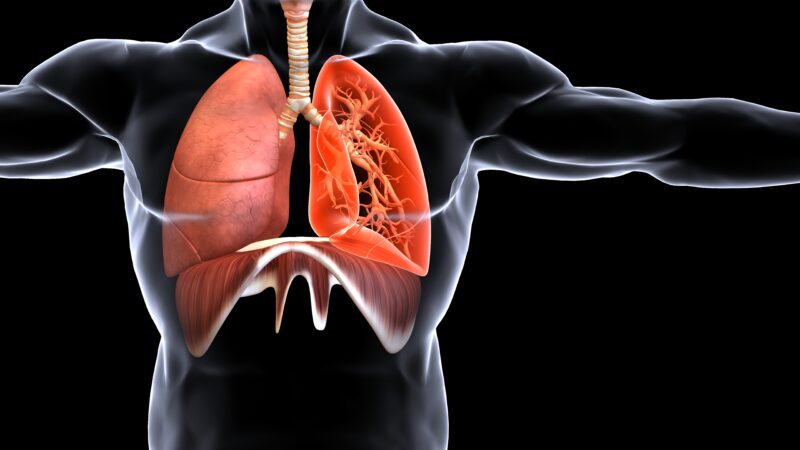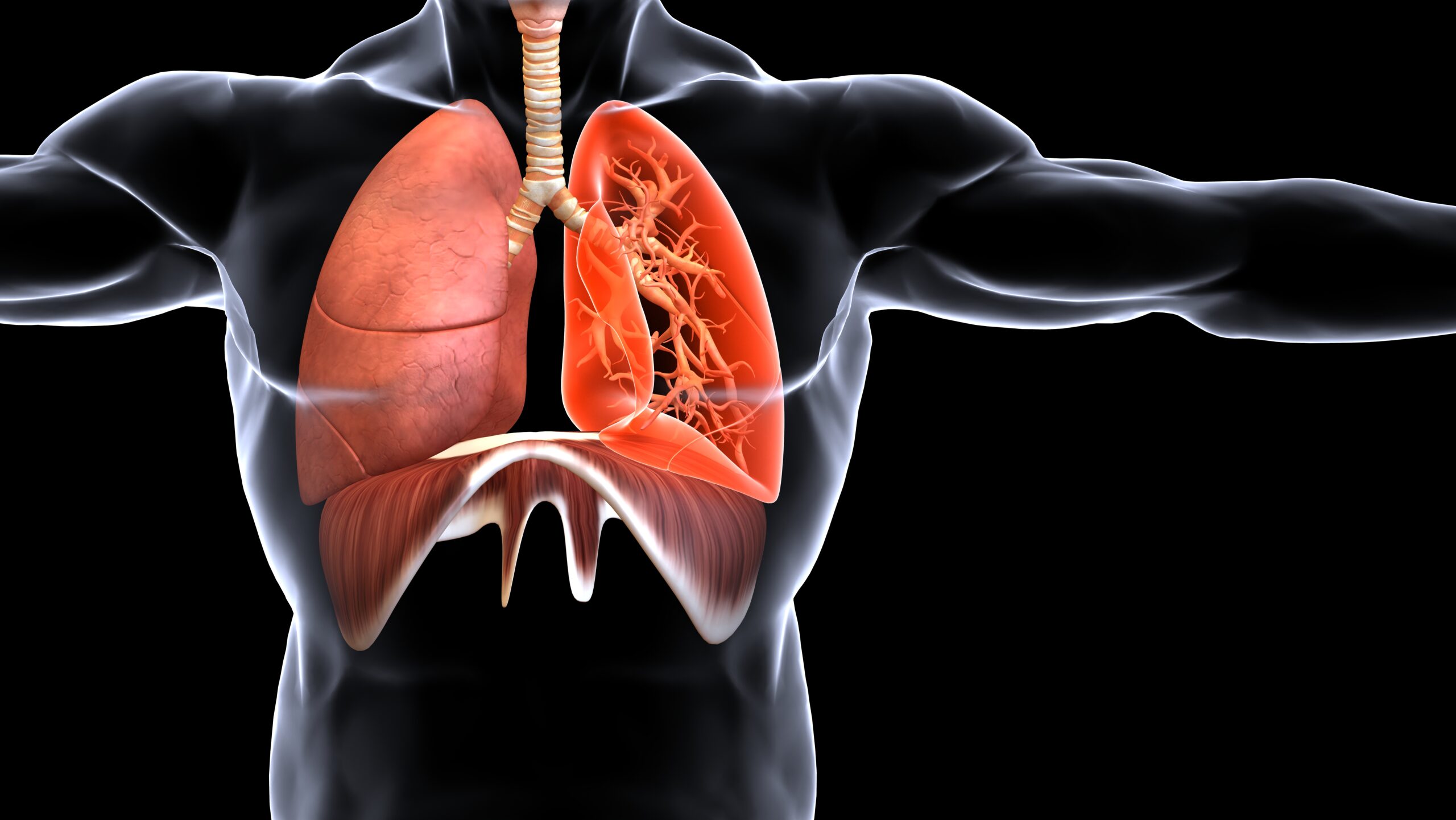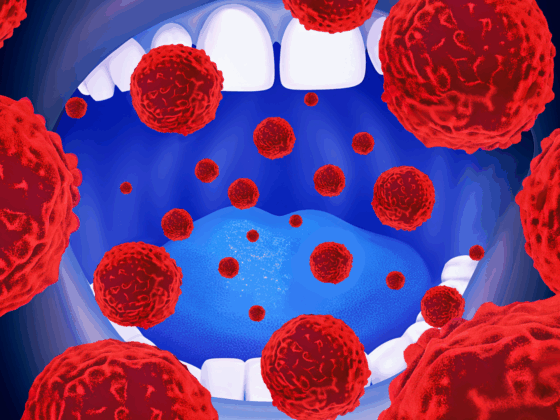The amino acid aspartate has been found to function as an extracellular signalling molecule to promote lung metastases in breast cancer. The study, published in Nature, 1 January, which was undertaken in mice and postmortem human tissue, showed evidence for an alternative “translation program” that results in increased aspartate levels in the lung leading to a cascade of events that allow cancer cells to grow more easily in the lung environment.
“Even before breast cancer cells arrive in the lung, we found that the primary tumour was preparing the metabolites needed to support metastatic growth,” Sarah-Maria Fendt, the corresponding author tells Cancerworld. “We showed that aspartate induces a signalling cascade that allows disseminated breast cancer cells to make different proteins, resulting in collagen production creating a favourable environment, allowing the cancer cells to grow better in the lung.”
In more than half of patients where cancer spreads beyond the primary site, the lung is the metastatic location. Common cancers that metastasise to the lung include breast and liver cancers and malignant melanoma. In transition through the metastatic cascade (between distinct states such as proliferation of the primary tumour, invasion into healthy tissue, survival in the circulation, and colonisation of distant organs), Fendt argues that cancer cells need to change their cellular phenotypes to adapt to each stage, and that this requires metabolic changes. “In our research we investigate how metabolic rewiring and available nutrients aid the growth of tumours in distant organs, and how we can interrupt this process to define new therapeutic strategies,” explains Fendt, who is principal investigator at the VIB Center for Cancer Biology and Professor of Oncology at KU Leuven, Belgium.
In the current study, Fendt and colleagues focused on the ‘pre-metastatic niche’, defined first by David Lynden in a Nature paper in 2005, as the phenomenon where tumour-secreted factors induce the formation of microenvironments in distant organs conducive to tumour cell survival. “Our starting point was the realisation that, in order to effectively grow, the metastases require nutrients, leading us to theorise that primary tumours may alter the availability of nutrients in distant organs,” says Fendt.
First, to investigate how metastases grow in healthy organs versus organs that have been primed by the secretome of primary breast tumours (leading to pre-metastatic niche formation), the team performed single-cell RNA-sequencing (scRNA-seq) to compare cells from the lungs of healthy mice injected with tumour cells (controls), with cells from mice injected with both tumour cells and tumour secreted factors taken from 4T1 breast tumours. Results showed that the major difference between metastases growing in the pre-metastatic niche and metastases growing in a healthy organ was a gene expression signature indicating altered translation – the process in which new proteins are made.
Subsequently, they discovered that metastases growing in mice with primary tumours or mice who had been injected with tumour secreting factors showed highly elevated ‘hypusination’ of the initiation/elongation factor eIF5A. Hypusination is a post-translational modification, where a polyamine metabolite becomes attached to eIF5A. The hypusination of eIF5A is required for alternative protein production, and this modification was largely not found in lung metastases growing in healthy mice. The results led the team to conclude that the aggressiveness of lung metastases induced by pre-metastatic niche formation was mediated through eIF5A hypusination.
To identify the trigger, they compared lung interstitial fluid taken from mice injected with tumour secreted factors (derived from primary tumours) to interstitial fluid taken from healthy control mice. They found that concentrations of aspartate, an amino acid present in low concentrations in blood plasma, were around 2.5-fold higher in mice injected with tumour secreting factors compared to healthy mice.
Next, to investigate whether aspartate was the factor making metastasis more aggressive, the team explored differences in lung metastases growing in mice who underwent aspartate injections for 10 days and mice who received control solutions. Results showed that metastases from mice pre-treated with aspartate displayed increased eIF5A hypusination and increased total numbers of cancer cells in the lung. “We concluded aspartate triggers eIF5A hypusination and promotes the aggressiveness of lung metastases,” says Fendt.
After growing tumour spheroids from mouse 4T1 and human MCF10A HRASV12 breast cancer cells, the team monitored aspartate with mass spectrometry using 13C tracer analysis, and showed that aspartate bound to a subunit of the N-methyl-aspartate (NMDA) receptor known as glutamate ionotropic receptor NMDA type subunit 2D (GRIN2D). “We were surprised to find that aspartate wasn’t metabolised in cells into downstream products, but instead bound to a cell surface receptor,” says Fendt.
Using various methods, the team went on to demonstrate that, in comparison to controls, spheroids exposed to aspartate had increased levels of GRIND2D, eIF5A hypusination, collagen synthesis enzymes and collagen.
Finally, analysing postmortem human lung samples taken from patients with metastatic breast cancer the team found elevated expression of GRIN2D, eIF5A hypusination, collagen synthesis enzymes and collagen in metastases compared to the non-cancerous lung tissue. “This step provided evidence that the proteins identified in mice were also present in breast cancer patients with lung metastases,” says Fendt.
Overall, results from the study have enabled Fendt and colleagues to construct a pathway whereby signals from the primary breast tumour support the growth of lung metastases. “We believe that a yet-unidentified signal from the primary breast tumour induces aspartate levels in the lung to increase. The aspartate binds to the GRIN2D subunit of the NMDA receptor found on the incoming cancer cells, causing calcium to enter and induce a signalling cascade in the cancer cell. This in turn leads to eIF5A hypusination and consequently the induction of an alternative translational programme resulting in increased production of collagen by cancer cells,” explains Fendt.
The ultimate hope would be to use this information to inhibit formation of metastases. Potential drugs that could be repurposed, suggests Fendt, include memantine (currently used in Alzheimer’s disease), which targets the NMDA receptor, and difluoromethylornithine, (DFMO, currently used in patients with high-risk neuroblastoma), which targets a polyamine synthesis enzyme needed for eIF5A hypusination. The team have recently started preclinical studies exploring use of memantine and DFMO, (both as single agents and in combination versus standard of care) in mouse models of metastasis. “My hope for metastatic disease is that we will identify effective drug combinations as well as novel treatment strategies,” says Fendt, adding that the opportunity to repurpose drugs may offer the possibility to speed up the process.












